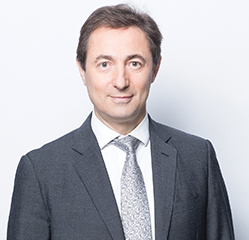Crédit Agricole’s ‘non-capitalist’ model reaps AT1 reward
France’s banking stalwart Crédit Agricole leveraged its unusual model to launch a dollar-denominated perpetual worth €4.75bn. David Wigan reports on the results.
Over the 125 years of its existence, France’s Crédit Agricole has been inseparable from the country’s farming industry. It first provided 19th-century farmers with an alternative to ruinous usurers and later, through its network of regional banks, helped farms recover from the effects of the Second World War. However, the bank’s deep regional roots are more than a quirk of history. They are, in fact, a defining factor of the group’s corporate structure and funding strategy up to this day.
Crédit Agricole is one of Europe’s last remaining universal financial services providers. It has a 26% share of the French retail market in terms of number of accounts (31% of mortgages), runs an ambitious wholesale bank, is Europe’s biggest asset manager (through Amundi) and is the number one bancassurer in Europe.
The reason it manages to maintain this breadth, while others around it are stepping back, is the bank’s critical mass in its core markets. In France, for example, it sells an average of nine products per client, a metric unheard of in most major markets. This kind of entrenchment is a direct result of the bank’s unique structure, which is based on the twin foundations of a listed entity (Crédit Agricole SA) and a wider group that includes its network of regional banks. Crucially, the group operates a system of cross guarantees, which means that no part can default without the whole group defaulting: the regional banks are duty bound to support the listed entity. The icing on the cake is that the regional banks have mutual shareholders, which are entitled to a fixed payout on their shares capped at about 2% above the French key rate.
A distinctive model
“Mutual shareholders don’t buy for returns but to participate in the life of the regional bank,” says Olivier Bélorgey, group head of treasury and funding at Crédit Agricole SA. “This is a non-capitalist model that allows the regionals to retain earnings year after year and without pressure on return on equity and on risk appetites because the dividend will be the same anyway.”
The natural consequence of Crédit Agricole’s safety-first approach is that the wider group is rock solid, with a core equity Tier 1 (CET1) capital ratio of 15% (targeted to reach between 15.5% and 16% by the end of 2019) and total loss-absorbing capital of 21.4% at the end of 2018 (targeted to reach 22% by the end of 2019). The backing of the regional banks gives the listed entity a degree of latitude, and at listed level the bank targets a CET1 ratio of 11%, slightly below that of its competitors.
Nevertheless, the bank takes a conservative approach to borrowing and financing, aiming to finance all its stable assets with stable funding, which it defines as client deposits, own funds and medium- and long-term funding. The bank loosely targets stable funding of €100bn more than its stable asset base and has about €200bn of medium- and long-term funding outstanding. It sold €34bn-worth of debt in 2018, of which €14.1bn was issued by the listed entity.
“For the listed entity we want our consumer finance activities to be self-funded,” says Mr Bélorgey. “Because we don’t have deposits, that means a lot of securitisations, which is more expensive but which we accept because we want to maintain that separation.”
Under Basel III Tier 1 capital requirements, Crédit Agricole SA is required to hold additional Tier 1 (AT1) bonds to the equivalent of 1.5% of its risk-weighted assets (RWA).
“In meeting the requirement, we focus on the RWA of the listed entity, and issue through the listed entity, because of course the regional banks have retained earnings for free, while at listed level AT1 remains cheaper than equity,” says Mr Bélorgey.
Hedging success
In early 2019, Crédit Agricole SA’s AT1 bucket was already above the 1.5% requirement, but unexpectedly positive capital market conditions motivated the bank to consider a new AT1 for the first time since January 2016. A little unusually, it opted for a dollar-denominated perpetual, a route often avoided by European banks that struggle to hedge dollar AT1s.
“It is hard to hedge in dollars, but we found a solution through our auditors and decided to proceed,” says Mr Bélorgey.
Books opened very early in Europe on the morning of February 20, aiming to catch Asian investors before the end of their day. Pricing was set at 7.125%, and the book was targeted at €1bn to €1.25bn. By noon, the book had grown to more than €2.5bn, which rose to €4bn by 4pm. Pricing tightened as orders poured in, and the deal was finally printed at 6.875% against a book of €4.75bn. The trigger rate on the bond was 7% CET1 at group level and 5.125% at listed level.
“Our aim was to try to make the bond as simple as possible, so with a first call after five years, and then every five years after,” says Mr Bélorgey. “I think what the deal showed is that there is clearly an appetite among investors for AT1 where the bank is large and secure, because over the longer term the risk-reward is excellent. It also helps that liquidity in the AT1 secondary market is amazing, certainly much better than other parts of the capital structure.”



